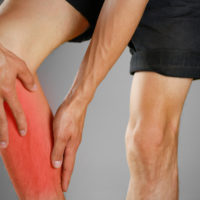What is Complex Regional Pain Syndrome?

The effects of a serious injury accident can linger for months, or even years, after the accident. Victims may need numerous surgeries, rehabilitation, or other medical treatments to begin to regain their previous level of functioning and mobility. One condition that can arise in victims of traumatic accidents is Complex Regional Pain Syndrome, or CRPS. Read on to learn more about this condition, and contact a personal injury attorney after a serious accident.
CRPS: Basic facts
Complex Regional Pain Syndrome is a disorder that affects traumatic accident victims, who have often suffered damage to either their central nervous system (the brain and spine), or to a portion of their peripheral nervous system (the nerves extending into the body and extremities). Patients who suffer from CRPS experience severe, often constant, pain in one of their limbs, hands, or feet. This pain is often described as feeling like pins-and-needles, squeezing, or burning. CRPS can last as little as several months, but it can cause long-term disability in some sufferers.
Symptoms of CRPS
The primary symptom of CRPS is severe, unrelenting pain in an extremity, but doctors will look for other symptoms that indicate CRPS as opposed to other forms of chronic pain. For instance, patients often experience inflammation or swelling of the joints at the point of injury. The skin may appear shiny or stretched thin. Patients often have problems with circulation at the site of the injury, causing poor blood flow and temperature regulation at the site of the pain. As a result, skin may be blotchy, pale, blue, purple, or red. Some patients may notice that they experience unusual sweating or irregularities in hair or nail growth at the affected site. If CRPS is left untreated, patients may stop using the affected limb or extremity due to the severe pain. Loss of use can cause muscles to atrophy or become stiff and contracted.
Diagnosing CRPS
There is no single test used to diagnose CRPS. Instead, when a patient seeks a doctor’s help with their chronic pain, doctors may use one or several tools to look for signs of the condition, such as:
- Bone scans to detect changes in the bones
- Tests of the sympathetic nervous system, including tests of blood flow or skin temperature
- X-rays to look for loss of bone minerals
- MRIs to identify changes in tissue
Injuries that commonly result from motor vehicle or slip-and-fall accidents are often the type that can result in patients developing CRPS. For example, crush injuries, fractures, burns, lacerations, and sprains have all been found to result in the development of CRPS. Not only may victims be eligible for compensation for treatment of the injuries themselves; they may also have a right to compensation to treat the resulting CRPS. Speak with an attorney if you have been diagnosed with CRPS after an accident.
For assistance with legal issues arising after an accident or slip-and-fall, contact the dedicated and effective personal injury lawyers at the Law Office of Taran M. Provost, PLLC for a consultation, at 646-942-7827.



